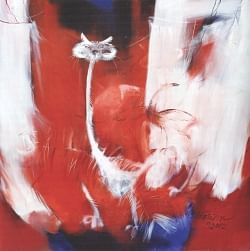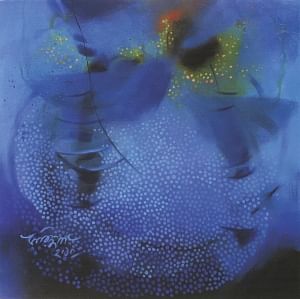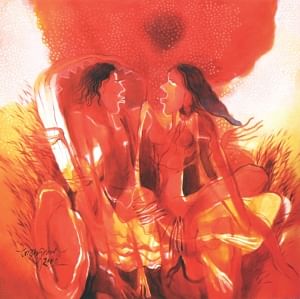| Home - Back Issues - The Team - Contact Us |
 |
| Volume 12 |Issue 03| January 18, 2013 | |
|
|
Art In Quest of Tradition Fayza Haq
Farida Zaman, who is having her solo exhibition “Bound to the Soil” at the Bengal Gallery, is one of our leading professors of fine arts. Farida has had her fair measure of struggle and strife. This was so even when she had her supportive husband Shawkutazaman to be her escort in Santineketan, India. She tends to delve into the simple beauties of life around her, especially the countryside of Chandpur, which remains in her nostalgic works of the moon and mustard fields and winding blue and emerald lakes. Her subjects are the simple people of Bangladesh and India. Being a woman, she takes up the cause of women. Farida has focused on what she has seen in the rural countryside--the daring fisherwomen, their fish, nets and boats. She says, "My parents and I went to the Chittagong Hill Tracts – during my schooldays, trips that were full of laughter and jokes. My work does reflect the innocence, beauty and simplicity of the Hill Tracts people.” Her works are littered with the beauty of the hills, trees and overgrowth of creepers. “Local Bangladesh, with the ethereal joy of the moonlight skidding across the skies egged me on to paint these images of boundless and endless joy and tranquillity. These natural elements make my heart leap, just as one does in reading Michael Madhushudan Dutta or Jibonananda Das,” she says. In her latest works with 60 exhibits in acrylic she has presented seasonal flowers like Kodom phool in the rainy season, shoe-flower in spring and water hyacinth during the rainy season. Kids, cats and birds are seen along with water images. When she went to study painting at the masters level in Barodha and Santiniketan, she was always in quest of tradition. Her colours and lines are brought from the paddy fields that she can recall. In her paintings there are no rough or unpleasant elements. She wishes to provide joy to the viewer. Even in the worst of situations when her dreams have remained unfulfilled, her picture perfect life is full of harmony and repose.
Touching on her stay in Santiniketan, Farida says, "The atmosphere was definitely what one could say as 'far from the madding crowd'." There was no sound or dust pollution, she says, except in holiday places. "The peace and quiet of Santiniketan was ideal for my studies—as I've heard in the reports of artists who came here to study after my days. 'Truth and beauty' were elements that one naturally found in Santiniketan," she says. She also adds that conventional universities in the US and Europe boast of the same atmosphere. The same applies to the seats of education in Japan and Australia, where she has been to. Using folk elements in modern art, she usually uses dots, dashes and earthy colours, such as burnt sienna and yellow ochre. Touching on the subject of the teachers who guided her, Farida says that the late Abdul Baset, Rafiqun Nabi and Anwarul Haq were her early “guides and philosophers”. In later days it was KG Subramanyan who told her at Barodaha to study as much as she could from Nature. Having seen it, she was supposed to create an identity of your own. Talking about the art market, she says, "It is something one can't be above or ignore. An artist cannot paint from the garret just to please himself. A painter must survive in society. There must be buyers so that he can sell. However the artist must enjoy himself and express his mind and soul." The exhibition will be on till January 26.
Copyright
(R) thedailystar.net 2013 |



